Proper running form is the key to running faster, longer, and with fewer injuries.
It means aligning your posture, stride, and movement patterns so your body works with gravity instead of against it. By focusing on proper form, you reduce wasted energy, prevent common running injuries, and maximize performance.
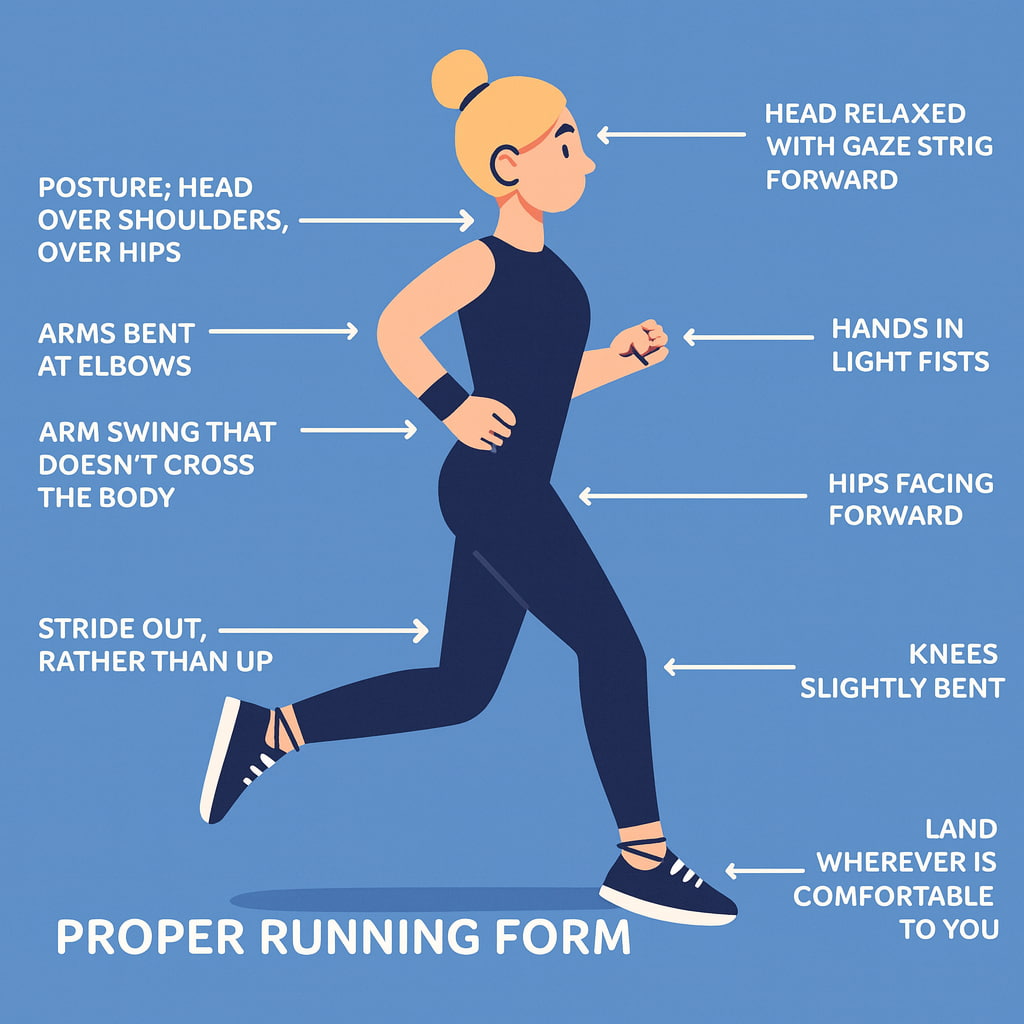
This is important because many runners, from beginners to marathoners, unknowingly develop habits that slow them down and increase injury risk. Correct form—head to toe—helps you run smoother and stronger. In this guide, we’ll break down every element of running form, give you practical drills, and share the latest science-backed advice for 2025.
Why Proper Running Form Matters
Running isn’t just about putting one foot in front of the other. It’s a highly repetitive movement—most runners take 1,500–2,000 steps per mile. If your form is off, even slightly, the stress multiplies across every stride.
- Better efficiency – Proper mechanics improve running economy, meaning you run faster with less effort (RunRepeat).
- Reduced injury risk – Good form reduces stress on knees, hips, and lower back, cutting down on shin splints, IT band pain, and plantar fasciitis (Hospital for Special Surgery).
- Enhanced performance – Elite runners consistently display high cadence, upright posture, and forward lean—all hallmarks of proper running mechanics.
Quick takeaway: Proper form saves energy and protects your body—making running more sustainable at any level.
Head and Eyes: Setting the Alignment

Your head is like a steering wheel—where it goes, your body follows.
- Keep your head aligned with your spine, not jutting forward.
- Look 10–20 feet ahead, not down at your feet. This keeps your airway open and spine neutral.
- Avoid staring upward—it strains the neck and breaks posture.
Pro tip: Pretend there’s a string gently pulling the top of your head toward the sky. This keeps you upright and balanced.
Shoulders and Arms: The Upper Body Connection
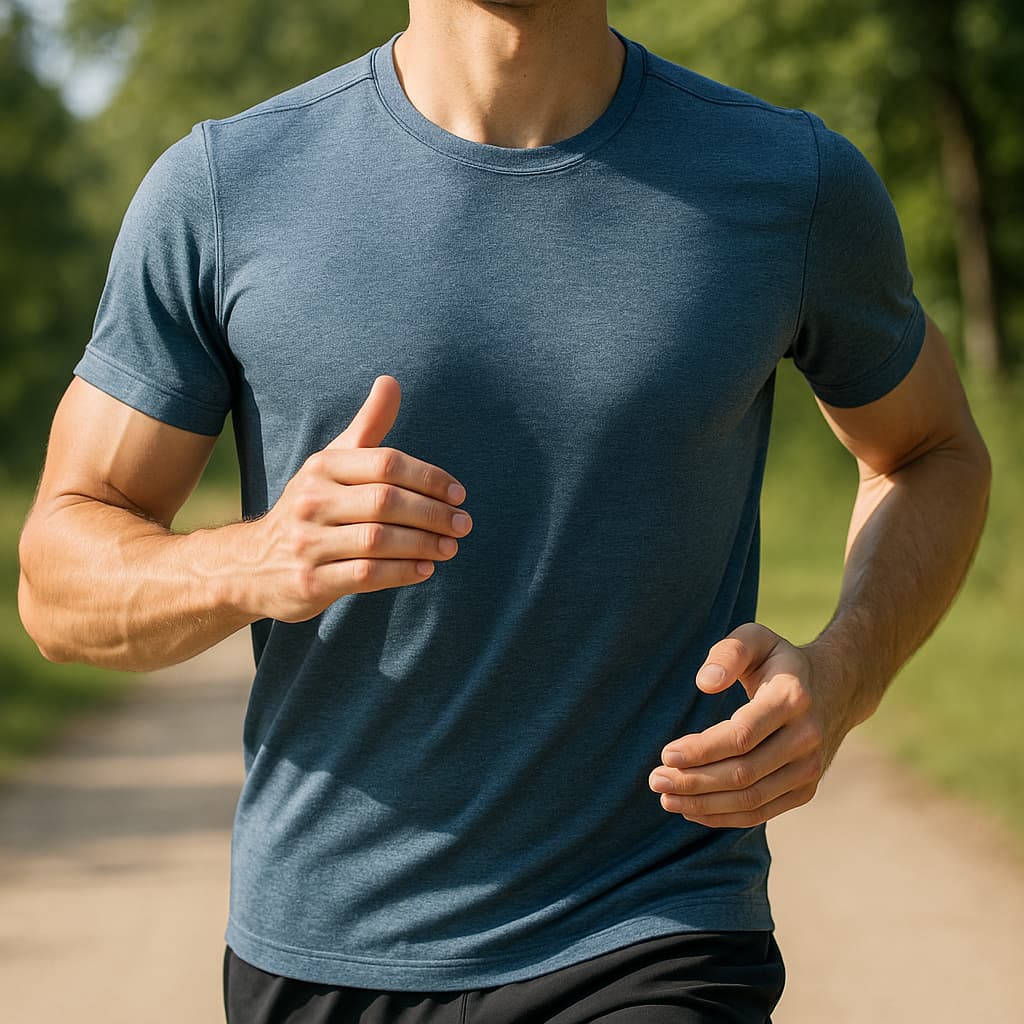
Your arms and shoulders are critical for rhythm and balance. Poor arm carriage wastes energy.
- Relax shoulders—pull them slightly back and down, away from ears.
- Keep elbows bent at ~90°, swinging forward and backward like pendulums.
- Don’t cross your arms over your chest—this twists the torso and slows you down.
- Hands: keep them loose, like you’re holding a potato chip or an egg without crushing it.
Pro tip: If your shoulders start to tense, shake out your arms mid-run to reset.
Torso and Core: Running Tall
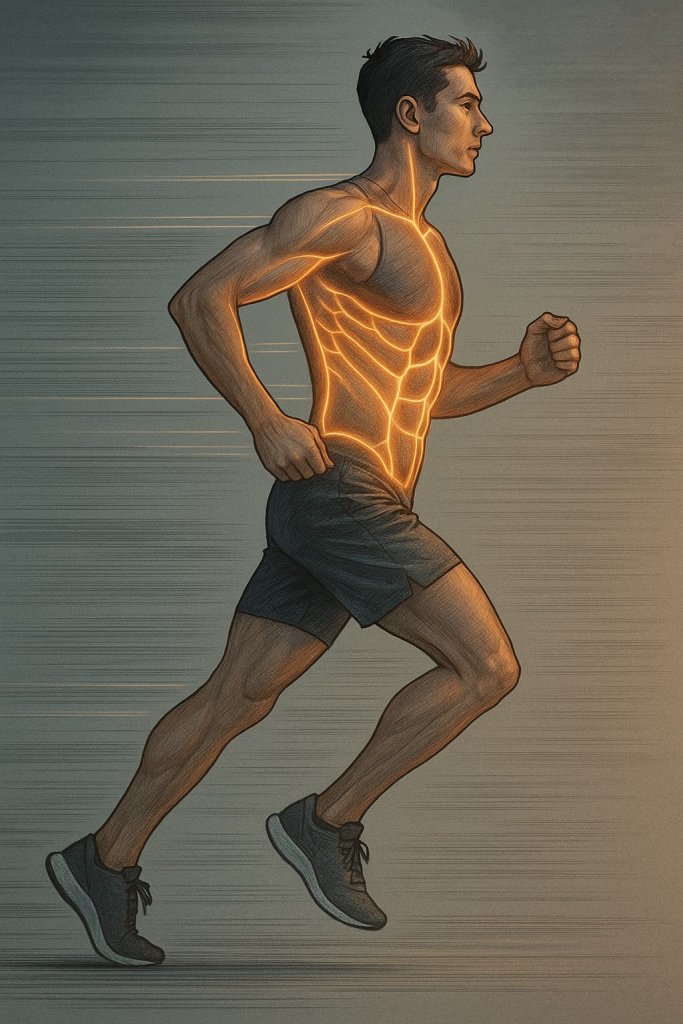
Think of your torso as the anchor of your stride.
- Maintain a slight forward lean (5°–7°) from the ankles, not from the waist.
- Engage your core muscles—they keep your pelvis stable and prevent slouching.
- Keep your chest open for better breathing capacity.
Pro tip: Imagine running tall like a proud runner in a race photo, not hunched over.
Hips and Legs: The Engine of Running
Your hips are the powerhouse of your stride. Weak hips often lead to overstriding and knee injuries.
- Land under your hips, not in front. Overstriding increases impact forces.
- Stride length: Keep steps short and quick—avoid long, heavy strides.
- Hip drive: Engage glutes to push backward with each stride, instead of reaching forward.
Pro tip: Focus on “pushing the ground away” with your back leg rather than pulling with your front.
Footstrike: Light and Efficient
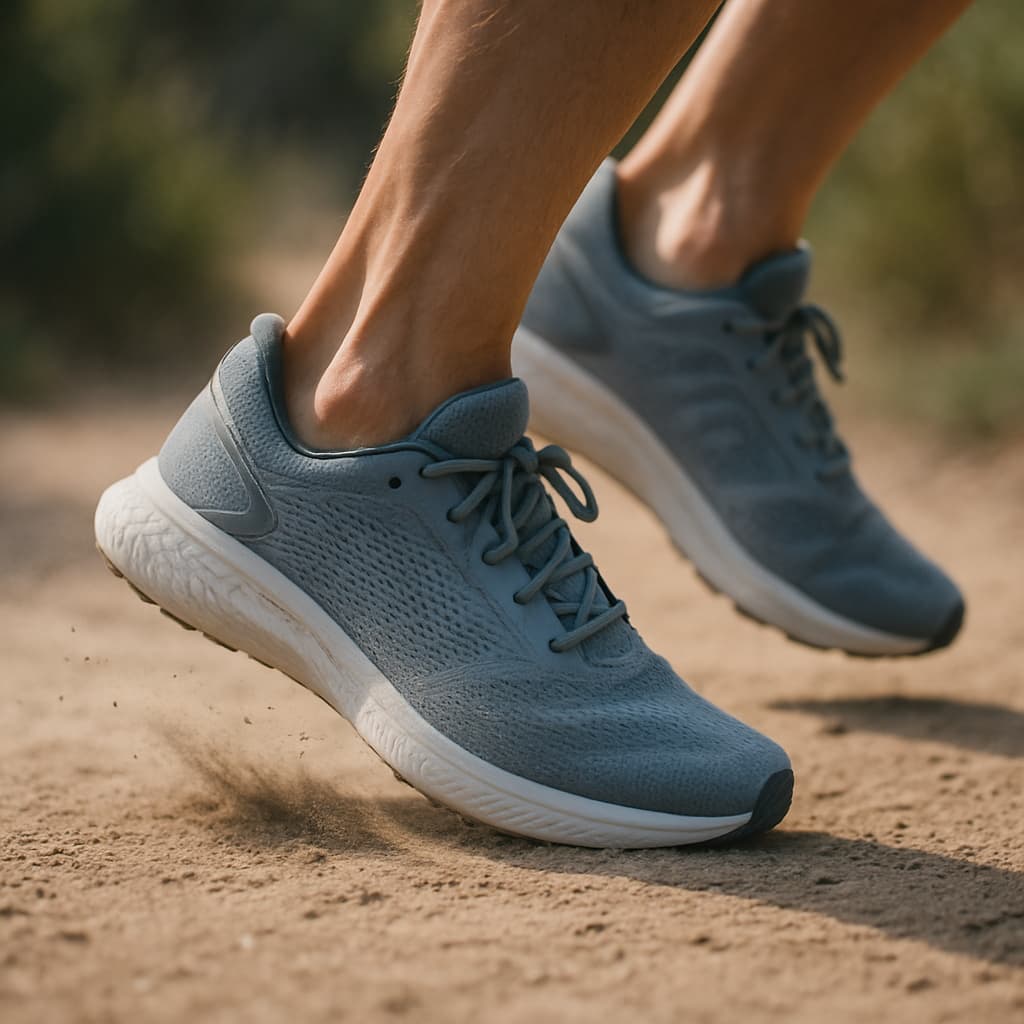
There’s debate about heel strike vs. midfoot strike, but here’s the consensus:
- Land softly, not with a hard heel slam.
- A midfoot strike (under your body) usually reduces stress on joints.
- Forefoot strike is common in sprinters, but less necessary for distance running.
- Loud, slappy footsteps = too much impact. Aim for quiet, smooth landings.
Adidas: 7 Keys to Proper Running Mechanics
Cadence: The Rhythm of Running
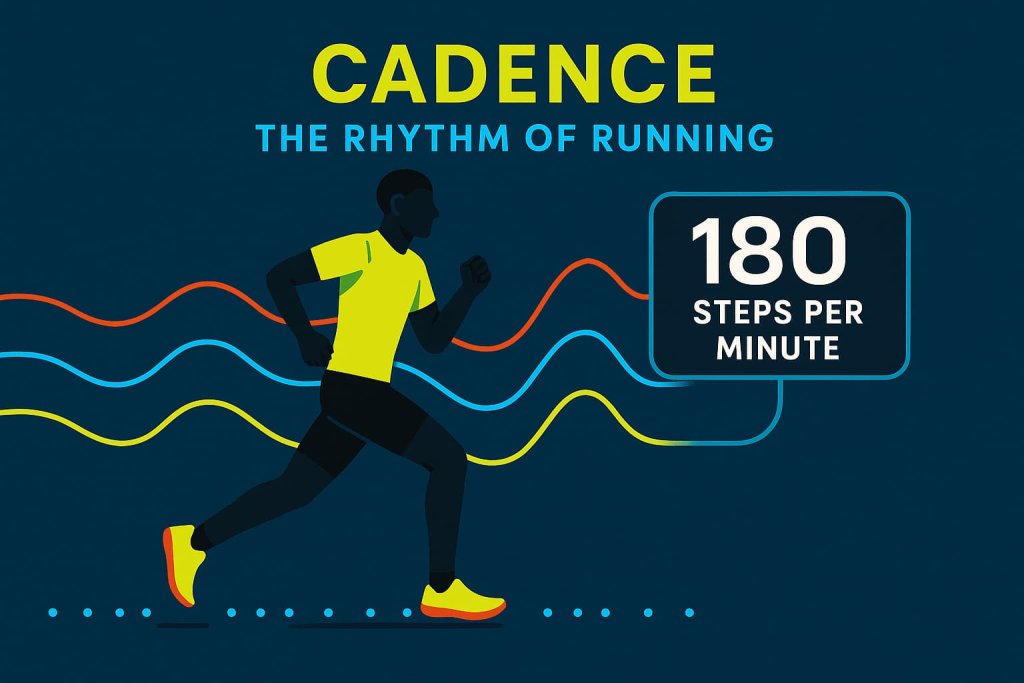
Cadence is the number of steps per minute. Elite runners usually hit 170–180 steps per minute.
- Higher cadence = shorter ground contact time, reduced injury risk, and smoother form.
- If your cadence is low (<160), try increasing gradually by 5%.
- Use music or a metronome app to lock into rhythm.
Pro tip: Pick songs with ~175–180 BPM to naturally match cadence.
Breathing and Relaxation

Breathing fuels endurance, but poor patterns limit performance.
- Use rhythmic breathing (inhale for 2–3 steps, exhale for 2–3).
- Avoid shallow chest breathing—breathe into your diaphragm.
- Relax your jaw and shoulders; tension wastes oxygen.
Pro tip: Exhale on the same side consistently (right or left foot) to reduce side stitches.
Strength Training for Better Running Form
Strength supports form, especially when fatigue sets in. Stronger muscles = fewer breakdowns late in runs.
Key areas to train:
- Glutes & hips – squats, hip thrusts, lateral band walks
- Core – planks, side planks, dead bugs
- Quads & hamstrings – lunges, Romanian deadlifts
- Calves – calf raises, jump rope
A growing body of research suggests runners who strength train reduce injury risk and improve running economy. For practical guidance on integrating strength with form, see SELF: Proper Running Form and HSS: Move Better—Proper Running Form.
Common Running Form Mistakes (and How to Fix Them)
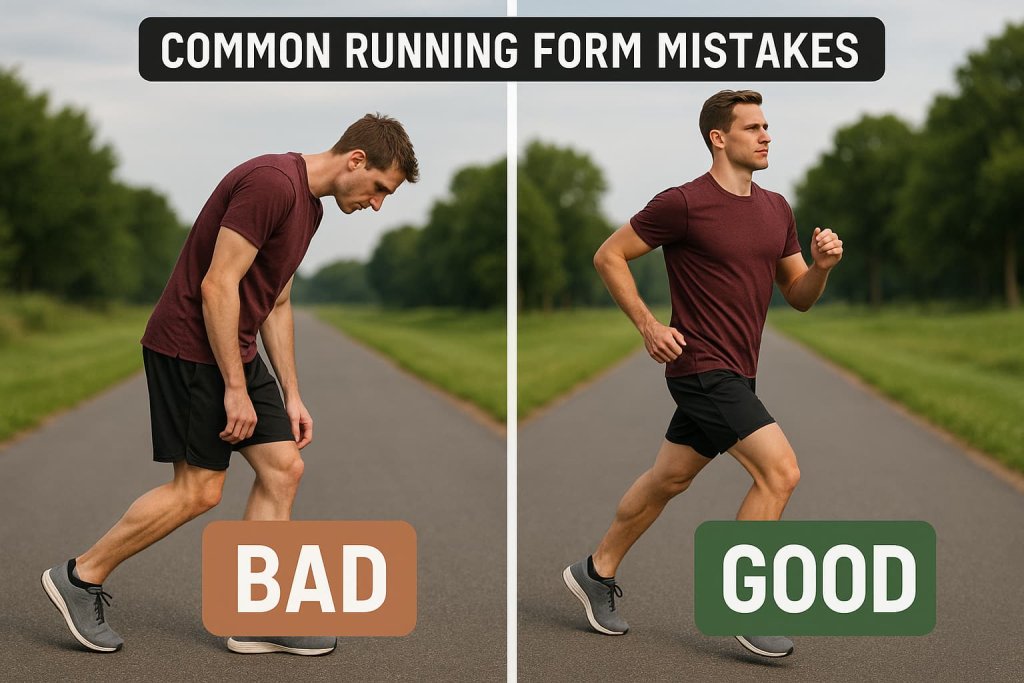
Even experienced runners make small form errors that can snowball into inefficiency and injuries over time. Here are the most common mistakes—and how to correct them:
1. Looking Down at Your Feet
When you constantly look at the ground, your head tilts forward, causing your spine to round and shoulders to slump. This reduces lung capacity and puts strain on your neck and upper back.
Fix: Keep your gaze 10–20 feet ahead of you. Imagine scanning the horizon instead of your shoes—this naturally aligns your spine and opens your chest for better breathing.
2. Crossing Arms Over Your Chest
Swinging arms across your torso causes twisting of the upper body, which wastes energy and throws off balance. Over time, it can also lead to shoulder and back tension.
Fix: Keep elbows bent at about 90 degrees and swing your arms forward and backward like pendulums. Pretend there’s a narrow lane by your sides—your hands should stay within it.
3. Overstriding with Heel Strikes
Overstriding happens when your foot lands too far in front of your body, usually with the heel slamming down first. This increases impact on your knees and hips, slows you down, and can cause shin splints.
Fix: Focus on landing your feet directly under your hips, with a light midfoot strike. Think “quicker, shorter steps” rather than reaching forward. Using a slightly higher cadence (170–180 steps per minute) can naturally correct overstriding.
4. Excessive Bouncing (Vertical Movement)
Bouncing up and down wastes energy that should go forward. It also increases impact on joints. Signs include loud footfalls or feeling like you’re running “up and down” instead of gliding forward.
Fix: Imagine running under a low ceiling—this encourages smooth, forward motion. Strengthening your core and glutes also helps control vertical oscillation.
5. Leaning from the Waist Instead of the Ankles
Many runners hunch forward at the waist, especially when tired. This compresses the diaphragm, restricts breathing, and places stress on the lower back.
Fix: Maintain a tall torso with a slight forward lean from the ankles—not the waist. Picture your whole body as a straight plank tilting forward together. This allows gravity to assist your stride without compromising posture.
Quick Fix to Spot Errors
The easiest way to identify these mistakes is to record yourself running on a treadmill or ask a friend to film you outdoors. Reviewing the footage helps you catch habits you might not feel in the moment.
Drills to Improve Running Form
Incorporate these short drills 1–2 times per week:
- High Knees – teaches quick turnover and strong knee lift
- Butt Kicks – activates hamstrings for propulsion
- A-Skips and B-Skips – improve stride coordination
- Stride-outs (Accelerations) – short sprints focusing on cadence and light landings
FAQ – Proper Running Form
1. What’s the #1 rule of proper running form?
Keep your feet landing under your hips—this reduces impact and improves efficiency.
2. Do I need to change my natural running style?
Not always. Make small adjustments—posture, cadence, relaxation—rather than forcing dramatic changes.
3. How can I increase my cadence safely?
Raise it gradually by 3–5% at a time. Forcing too much too soon risks injury.
4. Should beginners focus on footstrike?
No—focus on light, quick, and quiet steps. Your natural strike will adjust as your form improves.
5. What role does breathing play?
Rhythmic breathing prevents fatigue and helps maintain posture.
6. How do I keep form when tired?
Shorten your stride slightly, engage your core, and focus on cadence.
7. Is proper form the same for sprinting and long-distance?
No—sprinters lean more and strike forefoot, while distance runners maintain upright posture and midfoot strike.
Conclusion
Proper running form is about working with your body, not against it. By keeping your head up, shoulders relaxed, core engaged, and strides quick and light, you’ll not only run faster—you’ll also protect yourself from injuries and enjoy the process more.
Start today by making just one change: focus on cadence, posture, or arm swing. Over time, these small tweaks add up to major gains in performance and comfort.
